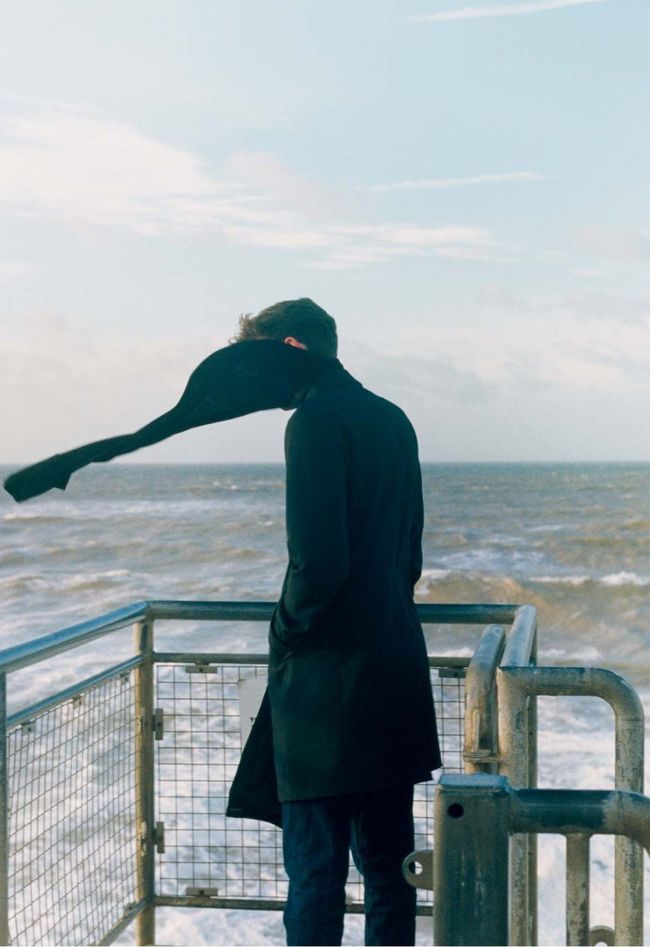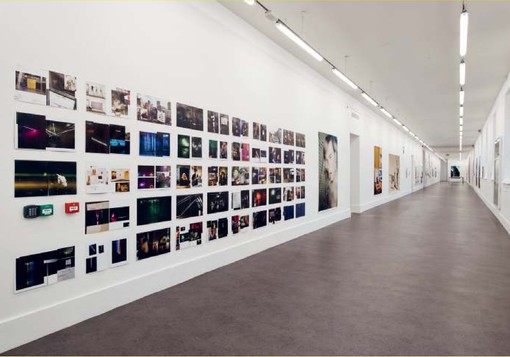Re—building the future
“Queerness is not here yet” writes Joe Esteban Munoz in Cruising Utopia, “Queerness is an ideality.” According to the theorist, the aesthetic provides a blueprint of the worlds proposed and promised by queerness. For many young people who stumbled across Wolfgang Tillmans’ photography in magazines, books or galleries, it offered just that, a portal into another world. Here he speaks to Róisín McVeigh.

Many will know the Turner prize winning artist for his photographs of hedonistic clubbers in the late 1980’s and ‘90s. In 1988, when Tillmans first began going out in Hamburg, raving and taking ecstasy, he recognised that something new was happening and felt compelled to communicate it. These peaceful, fun-loving environments offered a glimpse of a possible society: one that was communal, sexually liberated and judgement free, a utopian ideal of togetherness. “There was a huge shift through acid-house in the late ‘80s when style and class distinctions were ironed out by smiley culture and just a t-shirt and jeans”, Tillmans says. “I found that so liberating at the time. This egalitarian utopia that existed, and hopefully still exists, in a club.”
Since then, Tillmans’ oeuvre has grown to include still lifes, abstract works, landscapes and portraits, the full expanse of which is on show at IMMA in a new exhibition presciently titled Rebuilding The Future. His early club images take up a relatively small portion of the exhibition, but the same initial utopian themes prevail throughout his work. Acts of community, togetherness and solidarity, big and small, public and private, are presented across the exhibition in various contexts: a sexual-health clinic set up secretly in a Kenyan refugee camp, a palm raised in protest at a Black Lives Matter rally, two hands held tenderly across a hospital bed. “I often photograph what I want to see more of” he says in relation to his pictures of clubbing and protests, something which he sees as “a beautiful act of exerting one’s democratic rights”.
There is even a sense of community between the images themselves in the “non-hierarchical” way that they are exhibited. Magazine pages are displayed alongside original photographs. Images are taped or pinned to the walls, with a few framed. An aversion to prescribed meanings or boxing things off is central to the way Tillmans lives his life and how he makes art. “I’m a child of modernism and I like modernism” he says, “but this modernist way of sorting things and aiming for one perfect way and one function and one form is strangely not how I feel. I’m against simplification, because I guess growing up gay I’ve always known that there is usually more than one side to the story, two points of view.”
He encourages the viewer to look closer, to consider the multiplicities of an object, person, place or activity, “to see the potential in something and then your mind transforms it into something else.” He gestures towards two photographs hanging behind us, offering an example. I’m not entirely sure what the first one is until he explains that it’s a super close up picture of his foot print in the sand. At such a scale each individual grain of sand is visible and resembles tiny crystals. The photo beside it depicts indigenous forest in Tierra Del Fuego on the Southern tip of South America. “I love seeing those two together because the textures play so intensely off each other” he explains “they are two realities and they both exist, and they don’t have to exclude each other.”
Tillmans is an imposing presence, and yet there is something childlike about him too. His smile is big and welcoming and his laugh comes easily. At one point he takes a mini wine bottle from his pocket to have a swig, smiling at me coyly as he does so. Then finally he says “shall we go for a cigarette?” He offers me one, but when I realise it’s his last I ask him if he minds, to which he replies “well, yes, a little bit.” Tillmans doesn’t do airs and graces. He does, however, exercise noticeable restraint when he speaks. He chooses his words carefully, determined to articulate his thoughts correctly. He also has a habit of correcting himself when he says something that comes across negative. I probe him on whether this is because he is wary of me as a journalist. He tells me it isn’t. I suspect that Tillmans can’t help it, that this compulsive optimism is a part of who he is.
I have always been aware that the freedoms that I enjoy today have been fought hard for by people in the past.
He ascertains that he has grown more cynical than he was five years ago, given recent world events, seeing “how dark sides can suddenly rise up in people.” His song ‘Naive Me’ is about this feeling, that twenty five years ago he could have never imagined would happen. “It was out of my imagination that history would move backwards.” He recalls the day after Trump was inaugurated, when any reference to LGBTQ+ was erased from the White House’s website immediately. He also mentions a recent email from a friend in Sao Paulo, who wrote to him about the “shocking intensity” of homophobic abuse that is suddenly surfacing because new President, Jair Bolsonaro, is a fascist, far-right homophobe. He concludes “So I’m not a technical optimist.”

His recent political work would suggest otherwise, seeming to shift from being a passive chronicler of utopian ideals to an active protector of them. In 2016, he ran an anti-Brexit campaign, developing thousands of posters, t-shirts and social media posts with poetic imagery and lyrical phrases that urged people to vote ‘Remain’. While acknowledging its shortcomings and recognising the left wing’s critiques, he insists that the EU is not a neoliberal entity. “In my eyes it isn’t a capitalist project at the heart of it, it is of course located in a capitalist part of the world but it is largely a socially democratic shaped part of the world.”
Tillmans’ recognition of the fragility of democracy is central to his practice today. He is hyper aware of the life his own freedoms have afforded him, and how easily they can be taken away. “I have always been aware that the freedoms that I enjoy today have been fought hard for by people in the past and that it is a fragile freedom and so photography can make those moments a reality.” With his pictures he still hopes to instill a sense of wonder in the world and a realisation of the possible. “Those who believe in this free spirited worldview, one not narrowed down and not governed by fear, have to also be more outspoken in defense of it and in celebration of it.”
For all his philosophising and political activism, Tillmans hasn’t forgotten how to enjoy life. He is wary of a “fear of youth and fear of sexuality that seems to crouch up on people over the age of 35”. I ask him if he feels this now that he is 50. He laughs knowing I don’t mean this sincerely. “I still haven’t tired of going out. Berlin is a good place for that. There isn’t such an age ceiling. People tend to go out for longer in their lives” he pauses and smiles “or forever.”